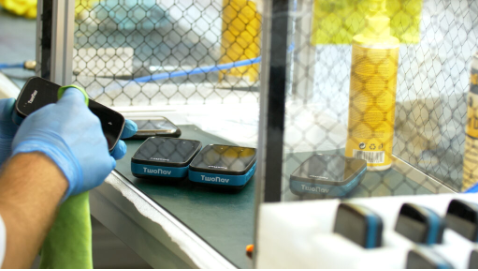Outdoor exploration equipment manufacturer TwoNav has started using BCN3D-developed3D printingtechnology for production operations.
According to reports, since
invest
Two Epsilon W50s and one
Sigma
Since the D25, the company has started working at its plant in Arernys de Mar, Barcelona3D printingParts and Manufacturing Tools. TwoNav claims to benefit from a new, more flexible, iterative design process that helps reduce lead times and costs.
Guillem Mitjà Puigdengolas, Product Manager at TwoNav, said: “I would recommend BCN to any company that needs to get a product to market quickly.3D printer.

Explore the great outdoors with TwoNav
Even the bravest souls, venturing into the wilderness, need to rely on GPS navigation devices to get home safely. TwoNav are specialists in this type of equipment, providing explorers with complete satellite navigation systems and
software
combination. The company caters to users of all levels, including novices and professionals, such as mountain emergency services.
Reliability is a must in areas where human security may be at risk. A large part of TwoNav’s value comes from the reliability of their GPS systems, which means they need to remain physically robust in nearly all environmental conditions.
Adrián Guillamón Aparicio, Production Manager at TwoNav, added that with the TwoNav service, people can use our reliable equipment for outdoor activities with confidence.

Integrated BCN3D 3D printing technology
To improve its production process and get its products to market as quickly as possible, TwoNav turned to BCN3D.the latter3D printing technologyHas been integrated into every stage of manufacturing.
The ability to rapidly prototype new GPS device enclosures will facilitate product updates during the design conceptualization phase. TwoNav no longer has to wait for new
mold
And production lines are set up, but prototyping is done in-house. Not only does this save costs, but prototypes that used to take weeks can now be 3D printed in hours.
In addition, TwoNav also 3D prints end-use parts, such as bike mounts for its GPS devices. Because the trial-and-error aspect of 3D printing is now so low-cost, it frees up time and resources to focus on achieving higher quality components suitable for sending to customers.
Lastly, TwoNav also uses 3D printing to create precision tools and organizers to help with device assembly. Aparicio concludes: “3D printing drives our development and production processes, and I am amazed at the variety of applications it has.”
(responsible editor: admin)


0 Comments for “TWONAV Simplifies GPS Device Production Using BCN3D 3D Printing Technology”